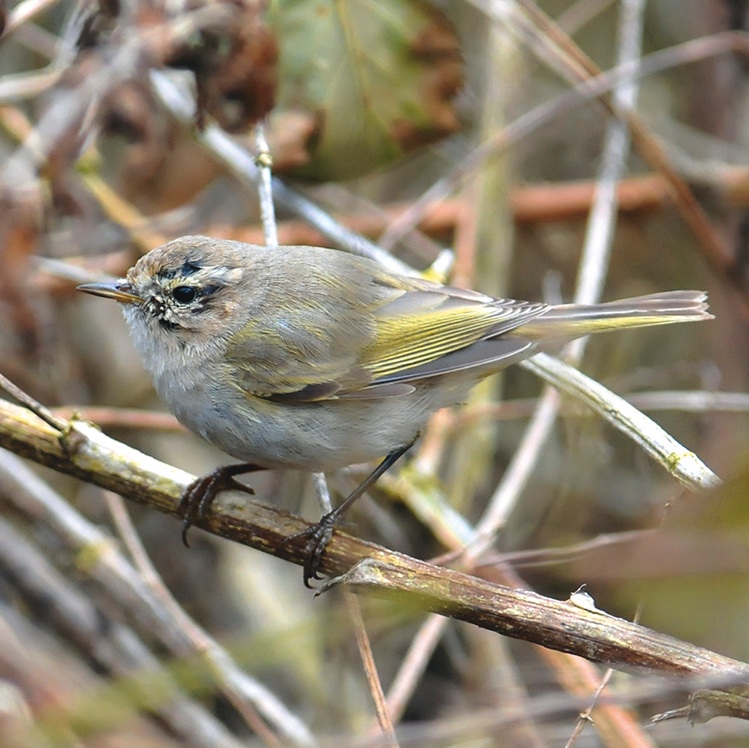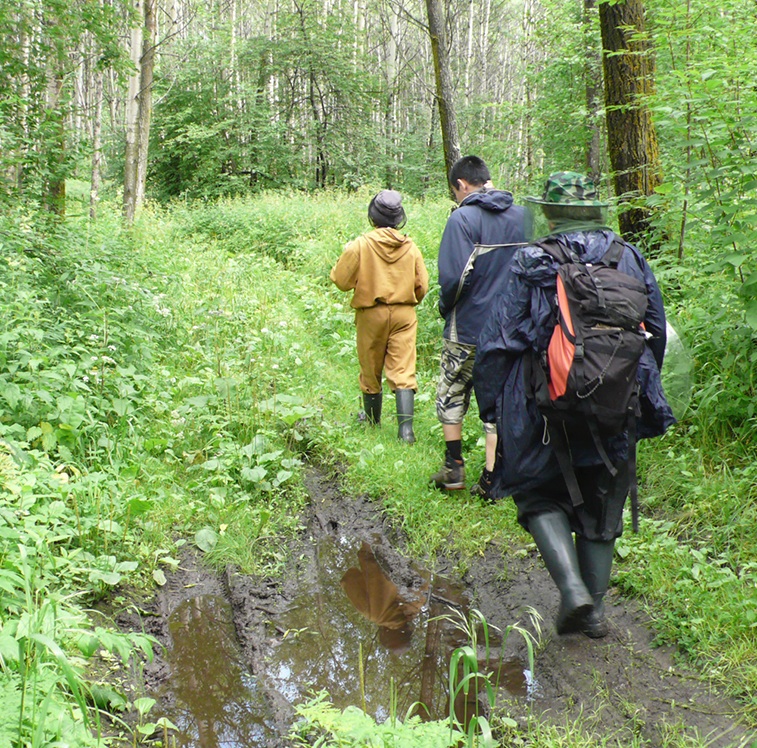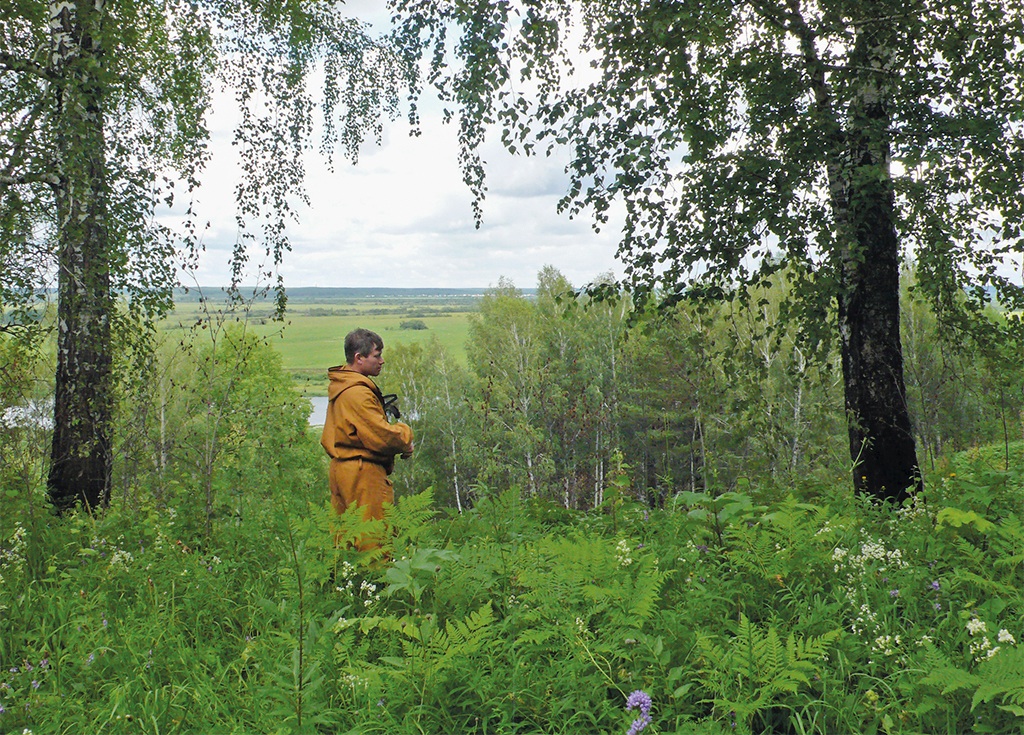I once asked bird artists Killian Mullarney and Lars Jonsson how many birds they identified first by sound. Both are authors of field guides, and both are excellent field birders with a strong visual bias. Killian said, “I detect about 80% of birds by sound, then if they’re interesting I follow them up”, while Lars said, “I identify around 60% of birds by sound first.” This is in my opinion the best kept secret in birding.
In The Sound Approach to birding (2006), I showed how sonagrams can help us in the struggle to make sense of bird sounds. The simple ‘shapes’ of four calls commonly used by adult Common Chiffchaff, Siberian Chiffchaff, Iberian Chiffchaff and Willow Warbler offered a straightforward introduction to sonagrams. Further inside the book, I made an attempt to explain a call given by Common Chiffchaffs, often in the autumn and occasionally year round.
If you find a Siberian Chiffchaff in Holland, the Dutch rarities committee has decided that songs and calls can be used as the definitive means of identifying it, just as Eastern and Western Bonelli’s Warblers are best separated by calls, or Iberian Chiffchaff and Common Chiffchaff. The British rarities committee decided in 2008 that Siberian Chiffchaff occurred too frequently to be vetted by them, and now if you find one you send your record to the local committee. Ours in Dorset accepts Siberian Chiffchaffs if heard to give diagnostic songs or calls. Birds that are silent are described as “having the characteristics of…”
So that’s that then. But somehow it’s not. We still have difficulty getting people to be less concerned about obscure field marks on Siberian Chiffchaffs, when sounds are the obvious key to identification. There seems to be confusion and it’s coming in part from ornithologist Alan Dean, who has published various papers on the subject in British Birds and contributed many postings to internet forums.
It’s difficult to work out exactly what worries him, but it’s fairly obvious that he would prefer some visual features to be regarded as the primary, and most reliable means of identifying Siberian Chiffchaff. To that end, he published a paper in British Birds including a selection of colour swatches from Smithe’s Naturalist’s color guide (1975), asking observers to match the upperpart colour of Siberian Chiffchaffs to the swatches (Dean 2008). The colours range from ‘pale neutral grey’ through ‘buff‑yellow’ and on to ‘drab’. Reading Alan’s internet contributions, he worries that we are misidentifying Common Chiffchaffs from Scandinavia P c abietinus.
Somewhere on the western edge of Siberia, the range of Scandinavian abietinus comes to an end and Siberian Chiffchaff’s range begins. Although I’ve never met Alan, I offered him a visit to this area with a sound recordist to find out how eastern abietinus, hybrids and western tristis really look and sound. He turned the offer down. Perhaps he thought that I was going to send him to Siberia without a return ticket.
Shaun found the first calling Siberian Chiffchaff for Poole Harbour on 22 November 1998, in the wood behind Knoll Beach car park on Studland. In the 2002 Dorset bird report, James wrote a review of Siberian Chiffchaffs, splitting the records between those that had been heard to vocalise (14 records) and those that hadn’t (eight).
More recently, Iain Prophet found what he presumed to be a Siberian Chiffchaff in the outflow bushes behind PC World in mid-February 2009. He hadn’t heard it call, so Nick, who had made it his mission to find and hear calling as many as possible in the harbour, was quick to follow up on the report. The whole area was busy with wintering chiffchaffs, and by the time Nick finished he had identified three tristis there, all giving the classic tristis call. The first was a classic brown bird, but the other two were sporting the so-called ‘grey and white’ plumage, regarded by Alan Dean as incompatible with tristis.

Siberian Chiffchaff Phylloscopus collybita tristis, Wessex Gate Retail Park, Poole, Dorset, 11 March 2009 (Nick Hopper). The bird was named ‘Patch’ as it was easily identified by its plumage.
Worrying that he should back up the identification further or face a barrage of abuse from some of the more plumage-orientated old guard, Nick persuaded Shaun to try and catch them to procure a feather or two for DNA analysis. Their attempt was unsuccessful. While trying, however, they were delighted to hear one of the ‘grey and white’ birds singing a perfect tristis song. This bird stayed the longest of the three, and continued to sing on and off for the remainder of its four-week stay, becoming quite popular and even being given a name.
In the Urals, there is a narrow ‘contact zone’ where abietinus and tristis meet and their breeding ranges overlap, with some hybridisation going on. In order to sidestep this much-exaggerated problem, Arnoud visited Sergey Gashkov, a birder and sound-recordist who works at the Zoological Museum of Tomsk State University in Tomsk, Siberia, 1600 km east of the contact zone. There he recorded the full vocabulary of Siberian Chiffchaff. Magnus analysed Arnoud’s recordings when he got back, and I’ve asked Magnus to take you through the full repertoire of tristis. Here are his thoughts…
“As we described in The Sound Approach to birding, the typical call of adult Siberian Chiffchaff is very different from Common Chiffchaff, being an uninflected, pure-sounding whistle (CD2‑42). These calls may be considered to have a plaintive, sad-sounding quality, and this together with the subdued plumage tones may be why Blyth chose the name tristis (sad) when he first described Siberian Chiffchaff in 1843.
While tristis calls usually sound uninflected to our ear, sonagrams seldom show a simple horizontal line. Typically, they are shaped more like a crescent or arch: slightly rising at the start, flatter in the middle, and descending at the end. There may be subtle deviations from this, most of which are not particularly audible. In CD2-43, you can hear a medley of three call sequences recorded near Tomsk, which show how little variation there exists in adult, breeding-season calls. We are not aware of any call differences between males and females, and the limited range of variation in adult calls suggests that if any exist they must be very subtle.
CD2-42: Siberian Chiffchaff Phylloscopus collybita tristis Kolarovo, Tomsk, Russia, 12:19, 6 July 2011. Calls of an adult in the presence of a Red-backed Shrike Lanius collurio. Presumably, the chiffchaff had a nest or young nearby. Background: Blyth’s Reed Warbler Acrocephalus dumetorum. 110706.AB.121933.21
CD2-43a (0:00–0:17): Siberian Chiffchaff Phylloscopus collybita tristis University campus park, Tomsk, Russia, 07:30, 1 July 2011. Calls of an adult, probably at a nest. Background: song of Siberian Chiffchaff, Great Tit Parus major, Willow Tit Poecile montanus and Eurasian Magpie Pica pica. 110701.AB.073020.01
CD2-43b (0:18–0:34): Siberian Chiffchaff Phylloscopus collybita tristis Kolarovo, Tomsk, Russia, 14:45, 6 July 2011. Calls of an adult near its fledged brood, perhaps alarmed by the presence of people. Background: Blyth’s Reed Warbler Acrocephalus dumetorum. 110706.AB.144504.02
CD2-43c (0:35–0:53): Siberian Chiffchaff Phylloscopus collybita tristis Kolarovo, Tomsk, Russia, 14:27, 6 July 2011. Calls of a pair of adults, with occasional husky calls of fledgling. Background: Steppe Buzzard Buteo buteo vulpinus, Blyth’s Reed Warbler Acrocephalus dumetorum and Eurasian Magpie Pica pica. 110706.AB.142700.02
As we showed in The Sound Approach to birding, juvenile Common Chiffchaffs in summer can occasionally give very tristis-like calls. We have not heard these any later than mid-August. So by the time tristis arrive in northwestern Europe in late autumn, chiffchaffs with tristis-like calls should indeed be Siberian. Arend Wassink’s photographs of Siberians trapped in Kazakhstan (van den Berg & The Sound Approach 2009) show that the variation in the plumage and bare parts colouration of Siberian is considerable. Many birders, however, continue to believe in a mythical population of ‘eastern abietinus’ with tristis-like calls. I think I know how this may have come about.
When birders started visiting the Middle East en masse from the ‘80s, they commonly encountered birds with calls similar to tristis but an appearance much closer to abietinus. These birds were not, however, ‘eastern abietinus’. Instead, they belonged to another branch of the chiffchaff genetic tree. In western Asia there are Common Chiffchaffs with calls very similar to tristis. I am not talking about the warm brown Caucasian Chiffchaff P lorenzii, sometimes referred to as ‘Mountain Chiffchaff’, which replaces Common at high altitude in eastern Turkey and the Caucasus. Instead, I am talking about lower-altitude chiffchaffs much closer genetically and in their appearance to collybita and abietinus Common Chiffchaff than they are to either Caucasian Chiffchaff or Siberian Chiffchaff (Helbig et al 1996). These Common Chiffchaffs have been ascribed to three different subspecies: brevirostris in Anatolia, caucasicus in the Caucasus and menzbieri in northern Iran.
We have not recorded menzbieri, but we do have recordings of adult brevirostris from Turkey and caucasicus from Armenia. Brevirostris have calls that descend very slightly (CD2-44), but typical calls of caucasicus sound indistinguishable from tristis to our ears (CD2-45). Their songs on the other hand sound nothing like tristis at all, and show only slight differences from collybita and abietinus Common Chiffchaffs. None of these western Asian chiffchaffs are thought to migrate as far as tristis, so they are unlikely to reach western Europe as tristis do. It is worth remembering that Green Warbler P nitidus breeds in the same part of the world, migrates further and is much easier to recognise, but has still been recorded only once in the UK.
CD2-44: Anatolian Common Chiffchaff Phylloscopus collybita brevirostris Soğuksu national park, Kızılcahamam, Turkey, 9 May 2001. Calls of a presumed female, while a male sings in the background. Background: Coal Tit Periparus ater and Eurasian Nuthatch Sitta europaea. 01.018.MR.01621.11
CD2-45: Caucasian Common Chiffchaff Phylloscopus collybita caucasicus Dilijan, Tavush, Armenia, 12:34, 2 May 2011. Calls of a presumed female, alarmed by the presence of the recordist while nest-building. Background: Dunnock Prunella modularis, Green Warbler Phylloscopus nitidus, Eurasian Nuthatch Sitta europaea and Coal Tit Periparus ater. 110502.MR.123442.1
Now we know that Siberian Chiffchaff is not the only chiffchaff with classic ‘tristis-like calls’, let’s flip the problem over and examine whether good Siberians ever have calls that deviate from the classic type. As we saw, there seems to be no evidence of this from adults recorded near Tomsk in July. However, juveniles just out of the nest do sound quite different from adults. As in other closely related Phylloscopus warblers, the calls of very young juveniles are quieter and huskier than adult calls. They have two main call types: contact calls that inform the adults and their siblings where they are, and begging calls that the contact calls change into when an adult arrives with food. Both of these call types can be heard in CD2‑46.
CD2-46: Siberian Chiffchaff Phylloscopus collybita tristis Tugojakovka river, Tomsk, Russia, 07:22, 7 July 2011. A brood of three or four fledglings giving contact calls while the male sings, then begging calls when an adult comes to feed them from 00:18. Background: Great Spotted Woodpecker Dendrocopos major, Rufous-tailed Robin Larvivora sibilans and Common Rosefinch Erythrina erythrina. 110707.AB.072203.10
Interestingly, calls of very young tristis have variable inflections. They are typically flat or slightly descending, but sometimes rise audibly in pitch. In CD2-47, you can hear examples of descending and rising juvenile contact calls from Tomsk in mid-July.
CD2-47a (0:00–0:22): Siberian Chiffchaff Phylloscopus collybita tristis Kolarovo, Tomsk, Russia, 14:53, 6 July 2011. Contact calls of fledglings waiting to be fed by an adult, which can be heard at a distance. In this recording, most of the calls have a slightly descending inflection. Background: Barn Swallow Hirundo rustica. 110706.AB.145337.01
CD2-47b (0:22–0:46) Siberian Chiffchaff Phylloscopus collybita tristis Tugojakovla river, Tomsk, Russia, 07:14, 7 July 2011. Calls of fledglings waiting to be fed. Background: Great Spotted Woodpecker Dendrocopos major, Golden Oriole Oriolus oriolus, Eurasian Siskin Spinus spinus and Common Rosefinch Erythrina erythrina. 110707.AB.071404.31
In Western Europe, we don’t see Siberian Chiffchaffs until October, by which time their calls are no longer husky and usually sound very similar to adults. However, autumn Siberians don’t always give classic tristis calls, and often show more inflection than we would expect. Perhaps we should not be surprised if some of the plasticity in calls of very young juveniles is retained in birds only three months older. Plasticity, as we explained in The Sound Approach to birding, is the greater variation audible in young birds still learning their sounds.
Like the fledglings from Tomsk, autumn vagrants not only give flat and slightly descending calls but occasionally also variants that are inflected upwards. Here is an example of a first-winter Siberian with very good credentials (it even sang), giving rising calls in October. It was recorded by Pim Wolf in the Netherlands (CD2-48).
CD2-48: Siberian Chiffchaff Phylloscopus collybita tristis Westkapelle, Zeeland, Netherlands, 12 October 2005. Calls of a first-winter (the one that can be heard singing in CD2-51). Some of these calls have a strongly rising inflection. Background: Common Chaffinch Fringilla coelebs and Brambling F montifringilla. Pim Wolf.
Contact calls are not the only sounds with which we can readily identify a Siberian Chiffchaff. Fortunately, migrants and wintering birds sometimes sing, and their song is highly distinctive. As mentioned already, they have been heard singing in Poole Harbour in winter. Here is an example of adult song, one of the most characteristic sounds of the Siberian forests, recorded in Tomsk in early July (CD2-49). Note that it contains many rising notes, usually lacking in Common Chiffchaff songs, giving it a much more fluent and melodious character.
CD2-49: Siberian Chiffchaff Phylloscopus collybita tristis, Tom river, Kolarovo biological station, Tomsk, Russia, 08:00, 4 July 2011. Song of an adult. Background: Pied Flycatcher Ficedula hypoleuca and Common Chaffinch Fringilla coelebs. 110704.AB.080001.02
Juveniles start attempting to sing almost as soon as they leave the nest. Their attempts might not immediately be recognised as song, but compare the pitch and rhythm of the husky sounds in CD2-50 with the adult song in the background. By the time they reach Europe, these subsongs have developed into something much closer to adult song. If you are lucky enough to hear a first-winter singing, you will probably hear some plasticity, hesitation, and sometimes a whispering quality that gives away its age. In CD2-51, you can hear subsong recorded from the same Dutch first-winter with odd, upward-inflected calls that you already heard.
CD2-50: Siberian Chiffchaff Phylloscopus collybita tristis Tom river, Tomsk, Russia, 09:41, 1 July 2011. Subsong of a very young fledgling. The two ‘strophes’ here were taken from different recordings made within 30 seconds of each other. Background: song of an adult, and Common Rosefinch Erythrina erythrina. 110701.AB.094136.12 & 110701.AB.094157.12
CD2-51: Siberian Chiffchaff Phylloscopus collybita tristis, Westkapelle, Zeeland, Netherlands, 12 October 2005. Subsong of a first-winter (the one that can be heard calling in CD2-48). Background: Great Spotted Woodpecker Dendrocopos major. Pim Wolf.

Sergey Gashkov, Evgeniy Karachakov and Arnoud, well protected against ticks and musquitos, in nesting habitat of Siberian Chiffchaff Phylloscopus collybita tristis, Tom river, Kolarovo, Tomsk, Russia, 3 July 2011 (Cecilia Bosman)
One neglected aspect of chiffchaff sounds is the little call-notes that are often heard between the strophes. In tristis, these notes can be described as CHUvit, having a characteristic low-high contour that distinguishes them from equivalent notes in European chiffchaffs (CD2-52). In collybita and abietinus, the notes heard between strophes are simpler, and sometimes just a single note or ‘syllable’. If there are two then the second is usually very similar to the first. In autumn subsongs of tristis, these notes are likely to be present (as indeed one was in CD2-51 at 0:01), and once in the Netherlands, I recorded some from a bird that was not singing at all (CD2-53). I suggest that birders listen for CHUvit calls as an additional means of identifying Siberian Chiffchaff.
CD2-52: Siberian Chiffchaff Phylloscopus collybita tristis, Tom river, Kolarovo biological station, Tomsk, Russia, 05:28, 4 July 2011. Song of an adult, with CHUvit notes in between strophes. Background: chiffchaff food (insects), Garden Warbler Sylvia borin and Siberian Rubythroat Calliope calliope. 110704.AB.052802.11
CD2-53: Siberian Chiffchaff Phylloscopus collybita tristis Harlingen, Friesland, Netherlands, 16:45, 2 January 2004. Contact calls and CHUvit calls of an individual approaching its roost. Background: traffic, children playing and Common Blackbird Turdus merula. 03.039.MR.12123.11

Sergey Gashkov in Siberian Chiffchaff Phylloscopus collybita tristis habitat, Tom river, Kolarovo, Tomsk, Russia, 3 July 2011 (Cecilia Bosman)
What about the possibility of vocal impostors, abietinus or hybrids from the narrow contact zone that have adopted calls or songs of tristis? According to a recent study, such birds are not unusual in the contact zone (Marova et al 2009). However, I suggest we should not worry too much about this, and keep things in perspective. The contact zone was revealed in the same study to be less than 65 km wide, compared to a total east-west range of more than 4,000 km. So hybrids and chiffchaffs that have learned the wrong calls must make up a very small number compared to the huge total population of tristis in the Siberian taiga. Any bird calling or singing like tristis in late autumn in western Europe is more than likely to be one. And if the bird itself is telling us it’s a tristis then that’s good enough for me.”